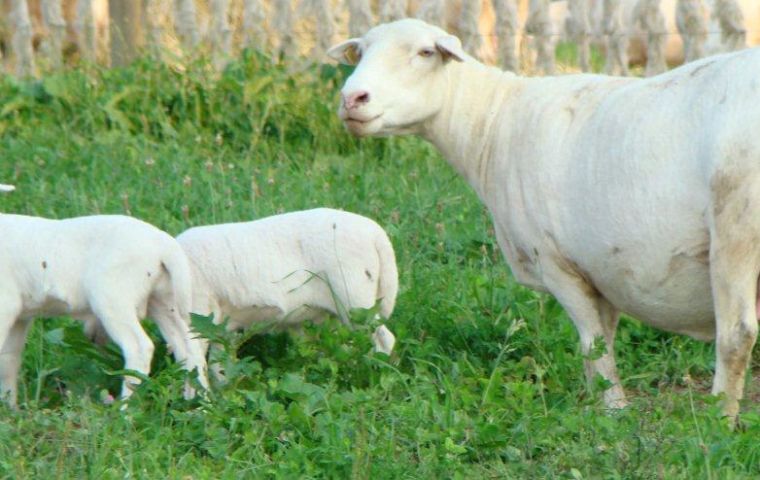MercoPress. South Atlantic News Agency
Introducing the Exlana sheep after eight years of development
 Using the most advanced breeding tools currently available, all sheep in the breed are fully recorded.
Using the most advanced breeding tools currently available, all sheep in the breed are fully recorded. The concept of an easier care animal is not new – as SIG, a group of eight sheep farmers developing Sheep Improved Genetics, are the first to admit. But after years of breeding sheep through genetics, not cosmetics, the Exlana breeders say they have bred the ultimate animal.
“We knew we had a winning formula,” commented Peter Baber, who farms at Christow, on the edge of Dartmoor.
“And judging by the positive response from those keen to find out more at the event, other farmers are fast coming to that conclusion too.”
The Exlana – “lana” from the Latin for wool – was so called because of its ability to shed its fleece. It has been in development over the last eight years.
Following initial discussions in 2005 and a “road-mapping day” sponsored by Genesis Faraday in 2006, a group of leading progressive commercial breeders pledged to produce a low-input and easily managed ewe, fit for purpose in meeting the demands of a sustainable domestic sheep sector.
SIG Ltd evolved with the intention of becoming a leading sheep-breeding company in the UK. Originally based on high-performance native breeds, the group introduced wool shedding and disease-resistance traits from a selection of breeds around the world to create the Exlana.
“Between us, the members have close to 5,000 fully recorded females,” commented David Disney, chairman of SIG. “But what makes the group unique is that they are managed as one flock, making them one of the largest performance-recorded nucleus flocks in the world.”
Using the most advanced breeding tools currently available, all sheep in the breed are fully recorded.
SIG is making use of EID using the Shearwell Farmworks data management system, recording ease of birth, lamb vigour, carcass growth rates, milk production and mothering ability, as well as natural resistance to worms.
Through performance recording, the group is now able to demonstrate that its current lamb crop is genetically superior for the classical production traits, such as milking ability and growth and carcass, but they are now able to lamb outside, shed their own fleeces and show some resistance to worms through FEC monitoring and recording.
The group is now preparing for the major national launch of the Exlana at the internationally recognised Sheep 2014, organised by the National Sheep Association and held at the Three Counties Showground in Malvern.
For more information, contact Peter Baber on 01647 252549 or visitwww.sig.uk.com/exlana-sheep.




Top Comments
Disclaimer & comment rules-

-

-

Read all commentsOK, so it sheds its own wool; but does it pick it up off the moorland and deposit it in sacks?
Jul 22nd, 2013 - 10:52 am 0Or has Sheep Improved Genetics also cloned genetically modified moorland-wool-collectors also?
Joking, but intrigued by how self-shearing works out in practice.
1 GeoffWard2
Jul 22nd, 2013 - 04:48 pm 0I agree, you would think the minimum would be close confinement while the coat is coming off to prevent as much dirt as possible from damaging the yield.
Plenty of my friends have dogs that shed hair, I've lost a fair bit too. We now have, in England, a race of Meisterschafen who will rule the world. They are not uneatable, but unbleatable.
Jul 22nd, 2013 - 09:12 pm 0But put it up in the Lakeland fells against a Herdwick, or in the Borders against a Border Leicester, and you may find that its path to World domination is baaed.
Commenting for this story is now closed.
If you have a Facebook account, become a fan and comment on our Facebook Page!